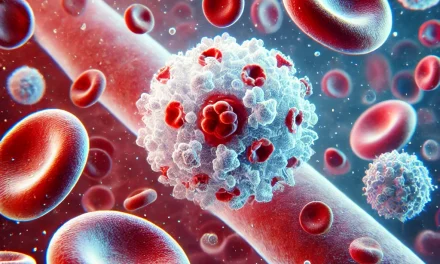How Protein Peptides Help with Ankylosing Spondylitis (AS)
Ankylosing spondylitis (AS) is a chronic, inflammatory autoimmune disease that primarily affects the spine and sacroiliac joints, causing pain, stiffness, and potentially leading to the fusion of the vertebrae. The inflammation associated with AS can cause significant pain and limit mobility, often worsening over time. Although the exact cause of AS remains unclear, genetic factors and immune system dysregulation are thought to play a major role in its development.
Currently, treatment for AS focuses on controlling inflammation, reducing pain, and preventing joint damage. Nonsteroidal anti-inflammatory drugs (NSAIDs), biologics, and physical therapy are common treatments, but they often focus on symptom management rather than altering the disease process itself. However, recent research into the potential use of protein peptides in treating ankylosing spondylitis has shown promise. Peptides, which are short chains of amino acids, have the ability to target specific biological processes, including inflammation and immune system regulation, offering a potential avenue for more targeted therapies in the treatment of AS.
This article will explore how protein peptides can help manage ankylosing spondylitis, their mechanisms of action, and their potential benefits in the treatment of this chronic condition.
What is Ankylosing Spondylitis?
Ankylosing spondylitis is a type of spondyloarthritis, a group of inflammatory diseases that affect the spine and the peripheral joints. The hallmark of AS is inflammation in the sacroiliac joints, which are located at the base of the spine, and in the joints of the spine itself. Over time, the inflammation can lead to the fusion of the vertebrae, a process known as ankylosis, which severely restricts mobility.
The symptoms of AS typically include:
- Chronic back pain and stiffness that improves with exercise and worsens with rest
- Inflammation in the joints, leading to pain and reduced range of motion
- Fatigue and systemic inflammation
- Postural changes, as the spine may become progressively more rigid
AS tends to develop in young adults, with men being more frequently affected than women. It is often associated with the HLA-B27 gene, which is present in a large proportion of individuals with AS. The disease can progress over time and cause significant disability if left untreated.
The Role of Protein Peptides in Ankylosing Spondylitis
Protein peptides are short chains of amino acids that have a variety of biological functions. Some peptides play critical roles in regulating immune responses, inflammation, and tissue repair, all of which are relevant to the pathology of ankylosing spondylitis. By targeting the specific pathways involved in AS, protein peptides may help alleviate symptoms, reduce inflammation, and slow disease progression.
1. Reducing Inflammation
The inflammation associated with ankylosing spondylitis is driven by an overactive immune response. In AS, the immune system mistakenly attacks healthy tissues, particularly in the joints and spine, leading to chronic inflammation. Protein peptides that can modulate immune responses and reduce inflammation offer significant therapeutic potential for AS.
- Thymosin Beta-4 (TB-500): TB-500 is a peptide known for its anti-inflammatory and regenerative properties. It has been shown to promote tissue repair, reduce inflammation, and stimulate the migration of cells to damaged areas. In animal studies, TB-500 has demonstrated the ability to reduce inflammation in joints, and it is being explored for its potential to help with autoimmune diseases like AS. By reducing inflammation in the spine and sacroiliac joints, TB-500 could help alleviate pain and stiffness associated with AS.
- BPC-157 (Body Protection Compound 157): BPC-157 is a peptide derived from a protein found in the stomach. It has been shown to have potent anti-inflammatory effects and to promote tissue healing. Research suggests that BPC-157 can reduce inflammation in joints and tissues, which may be beneficial for individuals with AS. In addition, BPC-157 has the ability to stimulate angiogenesis (the formation of new blood vessels), which can enhance tissue repair and recovery in the affected joints.
Both TB-500 and BPC-157 have shown promise in reducing inflammation, which is key to controlling the symptoms of ankylosing spondylitis and preventing further joint damage.
2. Modulating the Immune System
Since ankylosing spondylitis is an autoimmune disease, where the immune system attacks healthy tissues, modulating immune system activity is critical to managing the disease. Peptides that regulate immune cell function could offer a therapeutic approach for AS by preventing the overactivation of the immune system and reducing the chronic inflammation that drives disease progression.
- Interleukin-10 (IL-10) Peptides: IL-10 is an anti-inflammatory cytokine that plays a key role in regulating immune responses. It helps suppress the production of pro-inflammatory cytokines and promotes tissue healing. Studies have shown that IL-10 can inhibit the inflammatory responses that contribute to autoimmune diseases like AS. Peptide-based therapies that enhance IL-10 signaling may help control the immune dysfunction seen in AS, reducing inflammation and tissue damage.
- Osteoprotegerin (OPG): OPG is a protein peptide that acts as a decoy receptor for RANKL (Receptor Activator of Nuclear Factor kappa-B Ligand), a protein involved in osteoclast activation and bone resorption. In autoimmune diseases like AS, the increased activity of osteoclasts leads to bone erosion and damage. OPG, by inhibiting the RANKL-RANK interaction, can help prevent the excessive bone resorption seen in AS, while also regulating the immune system and reducing inflammation. Using OPG peptides could be beneficial for slowing the progression of joint damage in AS.
3. Promoting Tissue Repair and Bone Regeneration
Osteoporosis and bone ankylosis (fusion of bones) are common complications of ankylosing spondylitis, particularly as the disease progresses. The fusion of the spine due to bone remodeling and fibrosis can lead to significant stiffness and loss of function. Therefore, promoting tissue repair and bone regeneration is a crucial aspect of managing AS.
- Bone Morphogenetic Proteins (BMPs): BMPs are a group of peptides that are involved in bone development and repair. BMP-2 and BMP-7 have been studied for their ability to promote bone regeneration, especially in situations where bone healing is impaired. In AS, where bone remodeling and fusion are prominent, BMPs may help regulate the formation of new bone tissue and prevent excessive fusion of the vertebrae. BMP-based therapies could aid in restoring joint function and mobility by promoting the healing of damaged bone and cartilage.
- Growth Hormone-Releasing Peptides (GHRPs): GHRPs, such as Ipamorelin and GHRP-6, stimulate the release of growth hormone, which plays a role in promoting bone growth and tissue repair. Growth hormone can help enhance the regeneration of bone tissue and improve bone density, which is beneficial for individuals with AS, as they may experience weakened bones and an increased risk of fractures due to the disease. By stimulating bone regeneration and improving bone density, GHRPs may help mitigate some of the skeletal complications of AS.
4. Improving Mobility and Reducing Pain
One of the most debilitating symptoms of ankylosing spondylitis is chronic pain, which is caused by inflammation and stiffness in the affected joints. Peptides that reduce pain and improve mobility could help individuals with AS lead a more functional and active life.
- Endorphin-Mimicking Peptides: Endorphins are natural pain-relieving peptides produced by the body. Certain synthetic peptides have been developed to mimic the effects of endorphins, binding to the same receptors in the brain and reducing the perception of pain. By increasing endorphin levels, these peptides may help alleviate the pain and discomfort associated with AS, providing relief without the need for traditional pain medications.
The Future of Peptide Therapy for Ankylosing Spondylitis
While peptide therapy for ankylosing spondylitis is still in the research phase, the potential for peptide-based treatments to help with inflammation, immune modulation, bone regeneration, and pain management is significant. As more studies are conducted, we may see peptides becoming a mainstream treatment option for AS, either as standalone therapies or in combination with other treatments.
Peptides could be particularly valuable for patients who do not respond well to traditional therapies or for those looking for more targeted approaches that address the underlying disease mechanisms of AS, rather than just the symptoms.
Conclusion
Protein peptides represent a promising new frontier in the treatment of ankylosing spondylitis. By targeting the underlying mechanisms of inflammation, immune system dysregulation, and bone damage, peptides like TB-500, BPC-157, and BMPs offer a potential way to not only manage symptoms but also address the root causes of the disease. The ability to modulate the immune system, promote tissue repair, and enhance bone regeneration could significantly improve outcomes for individuals living with AS. As research continues, peptide-based therapies may become an important part of the treatment landscape for ankylosing spondylitis, providing hope for better management and improved quality of life for those affected by this chronic condition.
How Protein Peptides Help with Ankylosing Spondylitis (AS)




